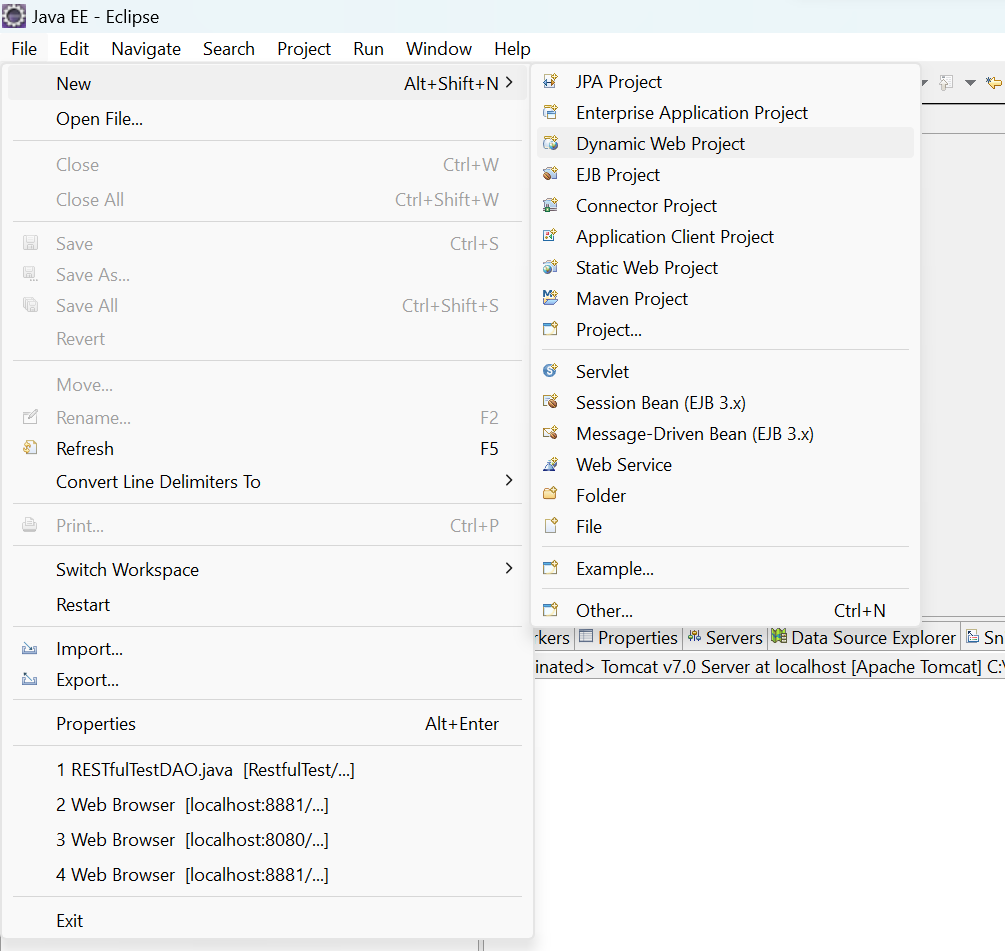What is Servlet in Java
Introduction of Servlet
Servlet in java is a generic server extension. It is a
kind of java class which can be loaded dynamically to expand the functionality
of a Server. Servlets are used with web servers and run inside a JVM on the
server. Unlike applets, your browser need not have required support for java.
It is like CGI (Common Gateway Interface) can handle request and response from
or to the web server.
Servlets are portable and platform independent. Servlets
are the component of the JEE framework used for web development. They are
basically Java programs that run inside the container. They are responsible for
accepting a request, processing it, and sending a response back.
Servlet need to be registered first
in web configuration file so that a Servlet Container instantiates a servlet by calling its init() method at the start-up.
Once its
initialization is complete, the servlet is ready to accept incoming requests.
Subsequently, the container directs these requests for processing in the
servlet's service() method. After that, it further delegates the request to the
appropriate method such as doGet() or doPost() based on the HTTP request type.
When web server stopped, using destroy(),
the Servlet container destroy the servlet object, make the servlet down, and it
can no longer accept incoming requests
Web Server
It is a program or software installed on a computer
system which can interacts with the client through the web browser. It delivers
web pages to the client and handle the events (request/response) between client
and server using HTTP/HTTPS protocol. We can consider the web server as the
package of a large number of programs installed on a computer system connected
to network (internet/intranet) for getting request data/file, sending response,
serving e-mail, publishing web pages, publish/consume api’s and establishing
connection between other servers.
In Java, web server is a server that is used to
support the web component like the web application build with Servlet and JSP.
Web server having separate container for Servlet and JSP. An web server can be
following category :-
1)
HTTP server ( to access web pages or services)
2)
SMTP server ( to support message or mail service)
3)
FTP server ( to transfer files on network )
4)
NNTP server (Network News Transfer Protocol)
An
web server contains various Containers to compile and execute different types
of server side programs. Web server supporting Java used “Servlet Container”
and “JSP container” for process/execute Servlet or JSP programs
Servlet Container
Servlet
container are set of compiled executable programs inside Web server which have
pre-defined rules and capability to manage requests and responses using Servlet.
These programs validate the requests and responses to ensure they meet the Java
servlet specifications.
Servlet
Container load, initialize and execute the Servlets. It handles large number of
request as it can hold many active servlets and listeners. A Servlet Container
my run standalone without web server.
JSP Container
JSP
container are set of compiled executable programs inside Web server which have
pre-defined rules and capability to compile the JSP file after deployment, manage
requests and responses. These programs validate the requests and responses to
ensure they meet the Java servlet specifications.
Lifecycle of a Servlet
Servlet need to be registered first
in web configuration file so that a Servlet Container
instantiates a servlet by calling its init() method at the start-up.
Once its
initialization is complete, the servlet is ready to accept incoming requests.
Subsequently, the container directs these requests for processing in the
servlet's service() method. After that, it further delegates the request to the
appropriate method such as doGet() or doPost() based on the HTTP request type.
When web server stopped, using destroy(), the Servlet container destroy the servlet object, make the servlet down, and it can no longer accept incoming requests. This is called as life cycle of a Servlet in java.
1)
Init method: Each servlet contains this method by default,
it will execute only once when Servlet instantiate.
2)
Service method: Generic servlet contains this method. Usually
this method contains the business logic to handle http request and http response.
3) Destroy method: This method used by Servlet Container to kill
the servlet object and release the memory. It will be called while web server
stopped.





Comments
Post a Comment